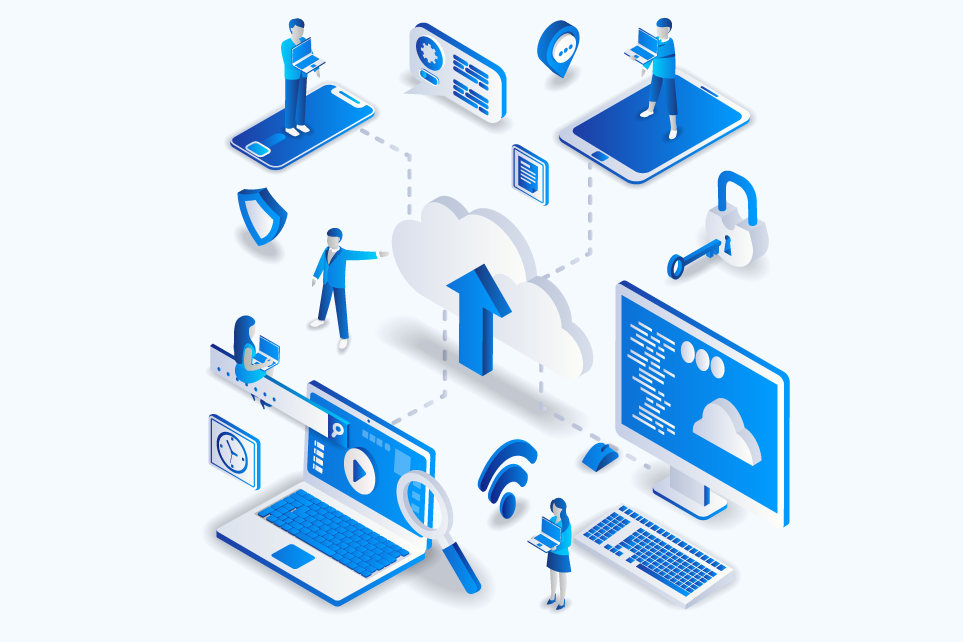In today’s digital era, cloud computing has become the backbone of modern businesses, offering a plethora of services to cater to diverse needs. From small startups to large enterprises, companies are leveraging cloud services to enhance efficiency, scalability, and cost-effectiveness.
However, choosing the right type of cloud service can be daunting, as each comes with its own set of pros and cons. Let’s delve into the different types of cloud services and weigh their advantages and disadvantages for businesses.
Infrastructure as a Service (IaaS):
Infrastructure as a Service provides virtualized computing resources over the internet. Businesses can rent virtual machines, storage, and networking components from cloud providers, eliminating the need for physical hardware infrastructure.
Pros:
- Scalability: IaaS allows businesses to scale their infrastructure up or down based on demand, providing flexibility.
- Cost-Efficiency: Companies can avoid the hefty upfront costs associated with purchasing and maintaining physical hardware.
- Resource Management: IaaS offers centralized management of infrastructure resources, streamlining operations.
Cons:
- Security Concerns: Entrusting sensitive data to third-party providers raises security risks, necessitating robust security measures.
- Dependency on Provider: Reliance on a single provider may pose challenges in cases of service outages or disruptions.
- Learning Curve: Managing virtualized infrastructure requires expertise, and businesses may face a learning curve while transitioning to IaaS.
Platform as a Service (PaaS):
Platform as a Service provides a platform allowing customers to develop, run, and manage applications without dealing with the underlying infrastructure complexities. PaaS offerings include development tools, middleware, and database management systems.
Pros:
- Rapid Development: PaaS accelerates application development by providing pre-configured tools and frameworks.
- Scalability: Businesses can easily scale applications without worrying about the underlying infrastructure.
- Reduced Maintenance: PaaS providers handle infrastructure maintenance, allowing businesses to focus on application development and innovation.
Cons:
- Vendor Lock-In: Adopting proprietary PaaS solutions may lead to vendor lock-in, limiting flexibility and portability.
- Limited Customization: PaaS platforms may restrict customization options, limiting developers’ control over the environment.
- Compatibility Issues: Integration with existing systems and tools may pose compatibility challenges, requiring additional effort.
Software as a Service (SaaS):
Software as a Service delivers software applications over the internet on a subscription basis. Users access applications via web browsers, eliminating the need for installation and maintenance.
Pros:
- Accessibility: SaaS applications are accessible from anywhere with an internet connection, fostering remote work and collaboration.
- Automatic Updates: SaaS providers handle software updates and maintenance, ensuring users always have access to the latest features and security patches.
- Cost Savings: Pay-as-you-go pricing models and reduced IT infrastructure requirements translate to cost savings for businesses.
Cons:
- Data Security: Entrusting sensitive data to third-party SaaS providers raises concerns about data security and privacy.
- Customization Limitations: SaaS applications may lack customization options, limiting businesses’ ability to tailor software to their specific needs.
- Dependency on Internet Connection: Reliance on internet connectivity means downtime or network issues can disrupt access to SaaS applications.
Function as a Service (FaaS)/Serverless Computing:
Function as a Service allows developers to deploy individual functions or pieces of code in response to events without managing server infrastructure. FaaS platforms automatically scale resources based on demand.
Pros:
- Cost-Efficiency: FaaS follows a pay-per-use model, enabling businesses to optimize costs by only paying for the resources consumed.
- Scalability: FaaS platforms automatically scale resources in response to workload fluctuations, ensuring optimal performance.
- Simplified Deployment: Developers can focus on writing code without worrying about provisioning or managing servers.
Cons:
- Cold Start Latency: FaaS platforms may experience latency during cold starts, as functions need to be initialized.
- Limited Execution Time: FaaS platforms impose limits on function execution time, which may constrain certain types of applications.
- Vendor Lock-In: Adopting proprietary FaaS platforms may result in vendor lock-in, limiting portability and interoperability.
In conclusion, the choice of cloud service depends on factors such as business requirements, budget, and technical expertise. While each type of cloud service offers distinct advantages, businesses must carefully evaluate their needs and weigh the pros and cons before making a decision.
Whether opting for IaaS, PaaS, SaaS, or FaaS, businesses can leverage cloud computing to drive innovation, agility, and growth in today’s competitive landscape.
Migrating to the cloud is a complex thing, and seeking help from experts like Appletech is a smart choice. At Appletech, we have a stringent Data Migration process to ensure a smooth transition.

